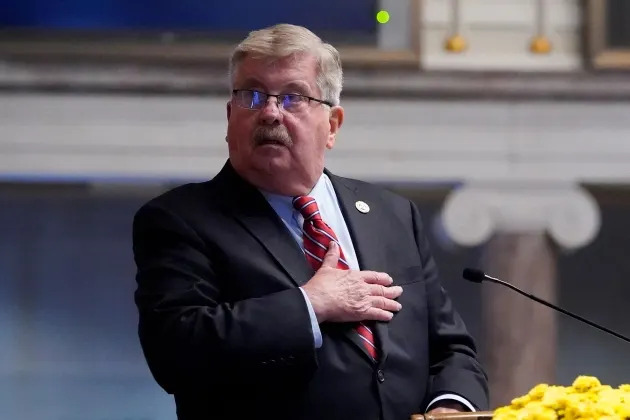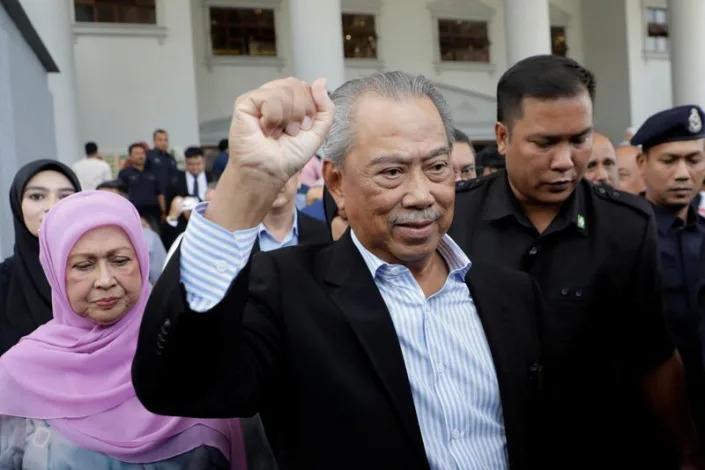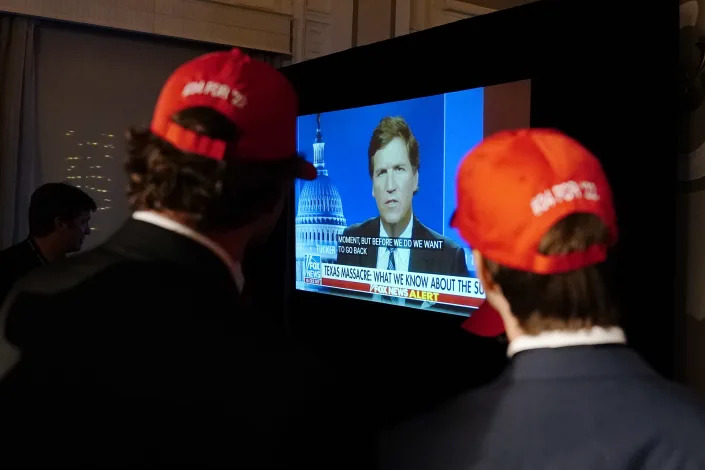During COVID origins hearing, congressman calls out witness for book on race
Alexander Nazaryan
·Senior White House Correspondent
Thu, March 9, 2023
WASHINGTON — Science author Nicholas Wade came to Capitol Hill on Wednesday to testify at a Republican panel on the origins of the coronavirus, but he was instead confronted with questions about “A Troublesome Inheritance,” his controversial 2014 book on race and genetics, which Democrats noted had been endorsed by the notorious racist and antisemite David Duke, as well as other white supremacists.
“I don’t have anything in common with the views of white supremacists,” Wade said at one point during the hearing.
“They love you, though,” shot back Rep. Kweisi Mfume, D-Md., arguing that Wade’s presence was an affront to any legitimate inquiry into the origins of the coronavirus — the subject of Wednesday’s proceedings.
A former head of the NAACP, Mfume said he was “appalled that this hearing now gets layered over with the issue of race.”
Author Nicholas Wade testifies Wednesday before the House Select Subcommittee on the Coronavirus Pandemic. (Chip Somodevilla/Getty Images)
Visibly shaken, Mfume went on to tell Wade that he was “absolutely offended that you would have the opportunity to take this platform and to add anything of significance to it.”
The tense exchange called into question whether inviting Wade to testify at the first hearing of the House Select Subcommittee on the Coronavirus Pandemic had been an effective move on the part of the Republican majority, which is seeking to legitimate the notion that the coronavirus was the product of a laboratory accident in China.
Wade is a proponent of that hypothesis, but his past writings on genetics and race seemed to frustrate his attempts to focus the conversation on the pandemic.
The committee’s leading Democrat, Rep. Raul Ruiz of California, used his opening statement to discredit Wade. “His participation hurts the credibility of this hearing,” he said.
Ever so briefly, Capitol Hill was plunged into a controversy nearly a decade old, though one whose subjects understandably continue to excite deep passions today.
A native of England and a graduate of Cambridge, Wade worked at the prestigious journals Science and Nature in the late 1970s and early ’80s, by which point he had settled in the United States. He joined the New York Times in 1982 and would remain at the newspaper for 30 years.
Rep. Raul Ruiz, D-Calif., voices his concern that the subcommittee invited Wade to testify. (Chip Somodevilla/Getty Images)
Wade has written a number of books throughout his career, but none has proved as remotely as explosive as his 2014 foray into the link between race and genetics — a link that, by then, many had come to discount.
In trying to reestablish the disputed correlation, Wade ventured into some of the more unseemly regions of what had once been known as scientific expertise. (His supporters would say he was dragged into that fraught territory by detractors who did not actually read his book, but some of those critics appeared to be familiar with his arguments.)
Race science was a favored occupation of the Nazis, who sought to marshal evidence — such as skull shape — to argue that Jews and other people of non-European origin were inherently inferior. Eugenicists in the United States resorted to similar arguments in trying to restrict immigration or the expansion of civil rights for Black people.
Although racial divisions may appear vast from cultural and social vantage points, genetic variations between populations are, in fact, quite minor.
Wade argued against that prevailing view. Intending to “demystify the genetic basis of race,” he tried to describe distinct racial groups, which he argued emanated from Africa, Europe and East Asia. He then tried to explain how these three groups developed distinct genomes, and how those differences shape their respective cultures.
Those explanations led to some highly suspect assertions, such as that Jews were uniquely “adapted to capitalism,” a classic antisemitic trope. People of African origin, meanwhile, had a “propensity to violence,” in Wade’s analysis.
During the hearing on Wednesday, Wade was confronted with questions about his controversial 2014 book on race and genetics, “A Troublesome Inheritance.” (Chip Somodevilla/Getty Images)
Mainstream reactions to the book were harsh. In its review, the Times called “A Troublesome Inheritance” “a deeply flawed, deceptive and dangerous book” that would give license to racists, while the Southern Poverty Law Center accused Wade of trafficking in “fringe racist theories masquerading as mainstream biology.” The American Conservative found the book unconvincing.
In a letter to the New York Times Book Review, 139 scientists (including many whose work Wade had cited) accused him of “misappropriating” research to make discredited arguments. They declared that “there is no support from the field of population genetics for Wade’s conjectures.”
He made news again with the arrival of the coronavirus, emerging as one of the first science writers to argue against the plausibility of the prevailing view that the pathogen had originated with an animal before entering the human population, most likely at a wildlife market in the Chinese city of Wuhan.
Wade laid out the case for the so-called lab leak theory in a lengthy Medium post in May 2021. The article remains an important milestone for other skeptics of the official Chinese narrative. Still, many scientists believe the virus originated in animals before jumping to humans.
Wade strenuously defended his record — and his book — on Wednesday. “This was a determinedly nonracist book. It has no scientific errors that I’m aware of. It has no racist statements. It stresses the theme of unity,” he told the lawmakers seated before him.
But his Democratic critics remained unconvinced, while some proponents of the lab leak hypothesis expressed frustration on social media that the important question of how the coronavirus originated was being eclipsed.










